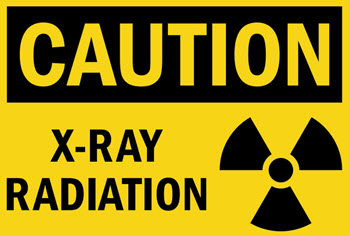Contents
The fact that x-ray exposure can have serious negative effects on the living tissue was discovered fairly early on by x-ray pioneers, but it took quite a while before this knowledge was generally accepted – partly because some types of damage from x-ray radiation aren’t immediately apparent.
 Because of the inherent hazards of x-ray exposure, x-ray artists who wish to incorporate x-ray generated images of living humans in their art will normally have to contend with images that have been obtained from patients that needed the x-ray exposure for medical reasons. Of course, this ethical dilemma is not present for x-ray artists who instead work with inanimate objects.
Because of the inherent hazards of x-ray exposure, x-ray artists who wish to incorporate x-ray generated images of living humans in their art will normally have to contend with images that have been obtained from patients that needed the x-ray exposure for medical reasons. Of course, this ethical dilemma is not present for x-ray artists who instead work with inanimate objects.
Even though no amount of x-ray exposure is considered completely harmless, the associated risks will increase with an increased dosage – both acute and accumulative over time. The amount of absorbed radiation from x-ray exposure varies with factors such as the type of x-ray test, accumulative length of exposure, and body part or parts involved. A person undergoing a CT scan will typically receive a higher dose of radiation than someone getting a traditional projectional radiography examination.
A so-called plain chest x-ray will typically expose the patient to the equivalent of 10 days of naturally occurring average background radiation. The exposure from a standard dental x-ray is even lower and equivalent to just 1 day of naturally occurring average background radiation. A chest CT scan is on the other hand equivalent to between two and three years of naturally occurring average background radiation!
Examples of risks
Cancer
X-rays are classified as a carcinogen by the World Health Organization (WHO).
Radiation burn
High x-ray exposure can cause radiation burns on the skin and other tissue. The ionizing radiation interacts with the cells, injuring them, and the body responds with redness (erythema) at the exposed site. Radiation burns are not just an acute problem; they are also associated with a higher risk of later developing radiation-induced cancers.
Radiation burn on the skin is also known as radiodermatitis. There are several types of radiodermatitis, including acute and chronic.
- Acute radiodermatitisIf the visible redness appears within 24 hours after exposure to radiation, it is considered acute radiodermatitis. The redness can be accompanied by blistering and/or skin peeling.
- Chronic radiodermatitisThis condition is caused by longer-term exposure to radiation that is not strong enough to cause acute radiodermatitis, but where the accumulative exposure over time is enough to cause a reaction.
Chronic radiodermatitis typically presents as atrophic indurated plaques, often whitish or yellowish, with telangiectasia (small dilated blood vessels), sometimes with hyperkeratosis. Induration is a condition where dermal thickening is causing the cutaneous surface to feel thicker and firmer. Hyperkeratosis is the thickening of the outermost layer of the epidermis.
In the early era of x-ray use, chronic radiodermatitis typically occurred in radiologists, radiographers and scientists who were frequently exposed to x-rays. The problem was especially common before the introduction of x-ray filters. It could take months or even years before any symptoms appeared.
What is radiation acne?
Radiation acne is comedo-like papules that appear on skin that has previously been exposed to ionizing radiation. These papules do not appear immediately after exposure; instead, they develop as the acute phase of radiation dermatitis begins to resolve.
Damage to the fetus
The risk of radiation damage from x-ray exposure is greater for a fetus than for the pregnant woman.
Still, there are situations where the benefits of the investigation outweigh the risks.
